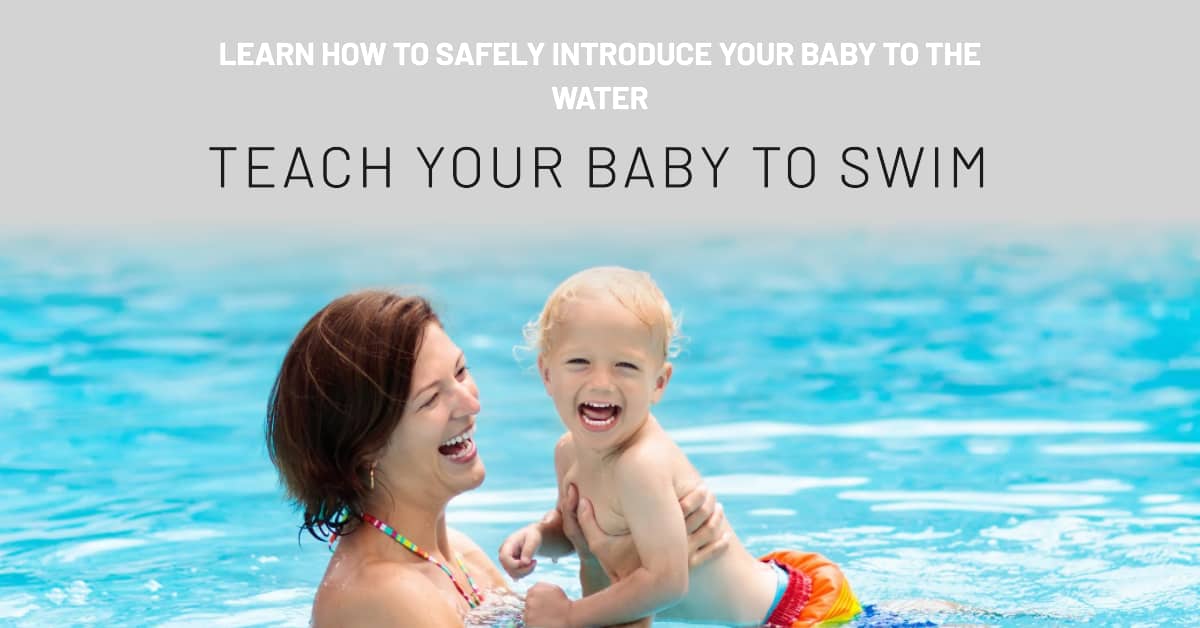How to Teach a Baby to Swim? The best way to teach a baby to swim is to start early. Begin by introducing the baby to water when they are young, and let them become comfortable with it. When they get older, you can begin teaching basic strokes like floating on their back or doggy paddle.
Be sure your instruction is gentle and encouraging; babies learn best through positive reinforcement. Gradually increase the difficulty as they feel more confident in the water, but never rush them or force them into activities that make them feel uncomfortable. It’s also important to remind yourself (and your child) that swimming isn’t a race – progress should be slow and steady so that everyone remains comfortable and safe in the pool.
- Start off in shallow water: Before you begin teaching your baby to swim, make sure the pool is shallow enough for your child to stand up in or that you have an area with a floor that gradually gets deeper
- This will allow them to feel comfortable and safe while they learn how to move around in the water
- Introduce them to the Water: Begin by slowly introducing your baby into the pool so they can get used to feeling of being submerged in water
- Make sure they are wearing proper swimming attire such as goggles, a bathing suit, and a floatation device if necessary
- Blow Bubbles: After getting used to being in the water, help your baby blow bubbles through their nose and mouth underwater – this teaches them how it feels when their head goes under without having any fear associated with it yet!
- Teach Basic Swimming Movements: Once bubbling has been established, you can start teaching basic swimming movements such as kicking their legs or paddling with their arms using flotation devices like kickboards or noodles if needed for support
- You may also want to demonstrate these moves yourself first before expecting your toddler to replicate them on his own so he understands what’s expected from him better! 5
- Have Fun!: Last but most importantly – make sure both you and your child are enjoying themselves throughout this process! Allow plenty of time for playtime between instruction sessions – splashing around together or playing games like “follow my leader” will give him more opportunities to practice his newfound skills while having fun at the same time!
How to Teach Your Baby to Swim 0-6 Months
Swimming is a great activity for babies, with many physical and mental benefits. To get your baby started on the right foot, it’s important to start teaching them to swim from an early age. For babies aged 0-6 months old, focus on introducing them to water in small ways; this can be done by placing them in shallow pools or baths and using simple techniques such as bubbling sounds while gently moving their arms and legs around.
It’s essential that you remain vigilant throughout these sessions so that your baby feels comfortable at all times. As they become more confident with the water, gradually introduce new swimming techniques like splashing and floating exercises so that they build up strength and coordination over time!

Credit: www.goldfishswimschool.com
When Should I Start Teaching My Baby to Swim?
When it comes to teaching a baby to swim, it is important to keep in mind that the best time for instruction depends greatly on the individual child. Generally speaking, most children are capable of beginning swimming lessons between 6 and 24 months old. Before enrolling your little one in classes, it’s important to assess their physical capabilities.
Babies should have developed good head control before entering the pool and be comfortable with the sensation of water on their skin. If you decide your baby is ready for lessons, look for a program specifically designed for young learners. These programs will focus on developing comfort in the water through play-based activities such as blowing bubbles or splashing around while wearing flotation devices like arm floaties or vests.
Not only will these activities help build confidence but they can also lay a foundation of skills that prepares them for more formal instruction when they reach school age.
How Do You Introduce a Baby to Swimming?
Introducing a baby to swimming can be an enjoyable and rewarding experience for all involved. To start, it is important to remember that babies are naturally buoyant in water and have no fear of the water due to their limited understanding of danger. It is also important to note that babies should not be thrown into pools or bodies of deep water until they understand basic safety rules such as never going into the pool without an adult present.
Prior to introducing your baby to swimming, consider enrolling them in swim classes with certified instructors as this will help them develop proper technique and gain confidence in the water. During classes, parents should stay close by but allow their children time and space to explore independently within a safe environment. If your child has had swim lessons before, try doing some fun activities together in the pool such as playing catch with floaties or blowing bubbles underwater.
Finally, it is important for parents not only explain safety rules but model them too – always wear a life jacket when near deep waters and never leave young children unattended around any body of water!
Can You Teach Your Own Baby to Swim?
Yes, you can teach your own baby to swim. You may be surprised at how quickly a baby can learn the basics of swimming when given proper instruction and guidance. It is important to remember though that babies should never be left unsupervised in or near water and must always wear a life jacket or other safety device while learning how to swim.
Additionally, it is best if you start with simple exercises such as blowing bubbles in the water or playing games with toys like floating bathtub ducks. As your baby grows more confident, gradually introduce them to more complex activities such as kicking their feet and arms in coordination while holding onto an adult’s hands for support. With consistent practice and patience, even very young children can master basic swimming skills within just a few week’s time.
What Age Can Babies Swim Naturally?
When it comes to swimming, babies are not born knowing how to swim. It is a skill they must learn and develop over time. Generally speaking, babies can start learning the basics of swimming around 4-6 months old, although some parents may wait until their baby is closer to 1 year before introducing them to water activities.
At this age, babies can begin to understand basic concepts such as buoyancy and body positioning in the water. They will also be able to hold their breath underwater for short periods of time as well as kick their legs independently while supported by an adult or floatation device. As they become more comfortable in the pool and stronger swimmers, children usually reach full proficiency with natural swimming techniques 3-5 years old depending on individual development rate and regular practice.
Introducing Your Baby To Swimming | Puddle Ducks
Conclusion
Teaching a baby to swim can be an incredibly rewarding experience for both the parent and the child. With a little patience, perseverance, and guidance, parents can help their babies learn how to safely enjoy swimming in no time. By joining them in the pool, providing proper support and making sure they remain safe at all times, parents are setting their babies up for success when it comes to learning how to swim.
With plenty of practice and fun time spent together in the water, soon enough your baby will be confidently swimming on their own!









